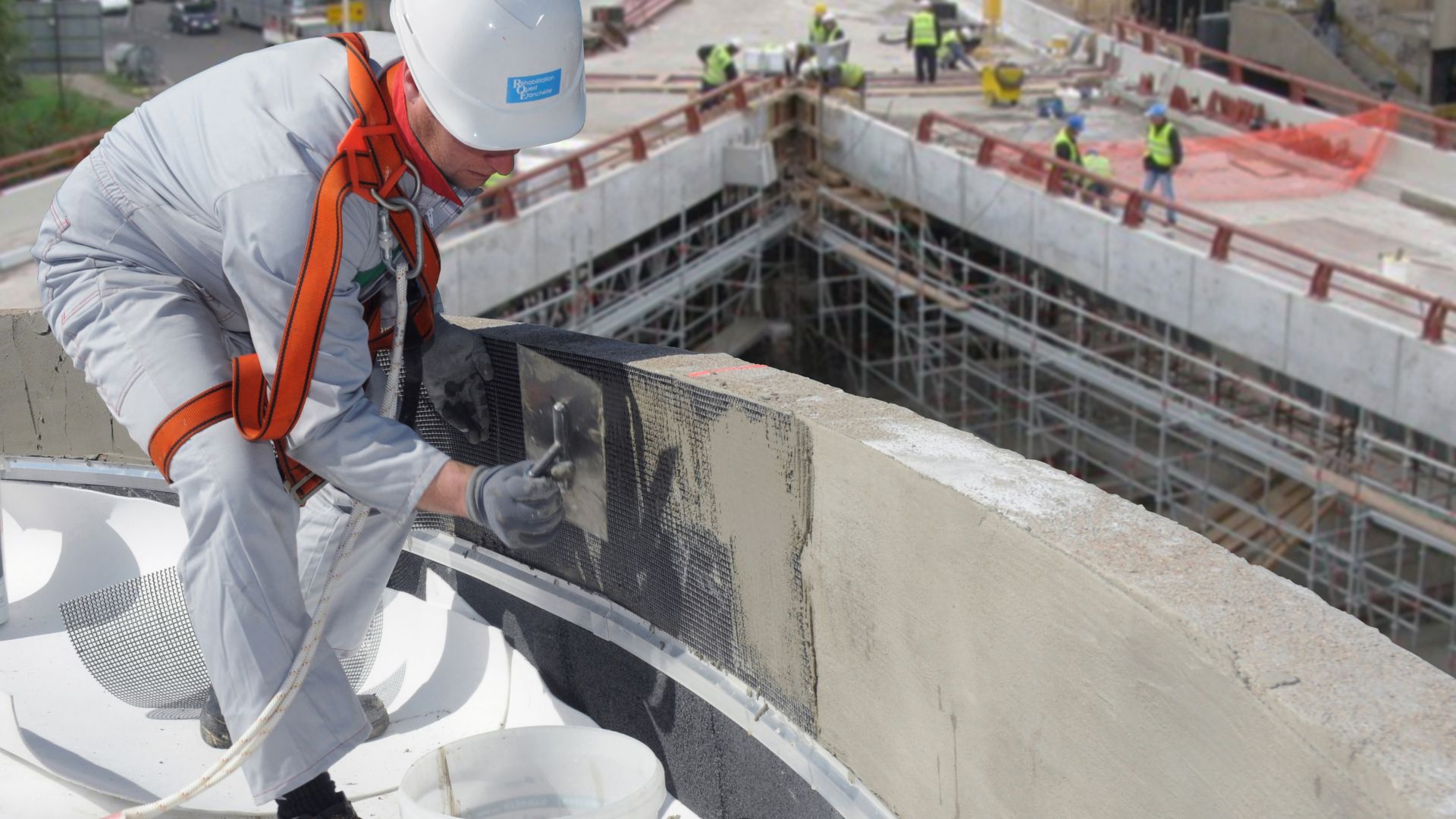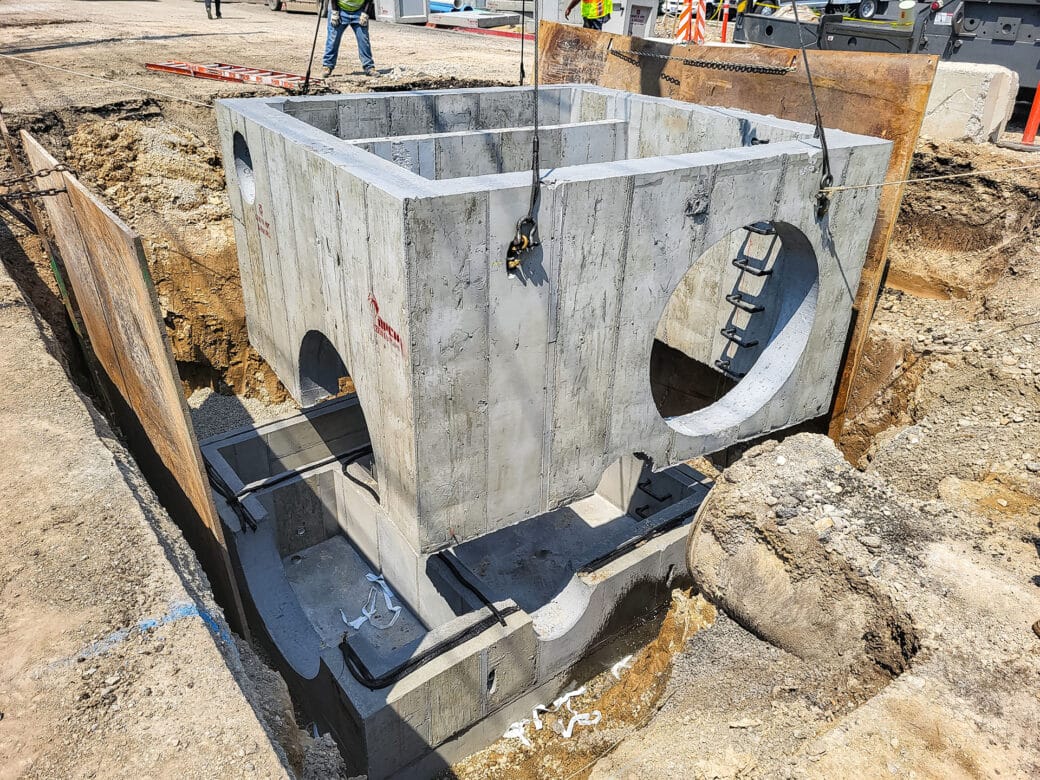The Necessary Duty of Concrete Structure in Structural Honesty and Long Life
When it involves constructing a property, the structure is extra vital than you may believe. Concrete foundations offer unrivaled strength and durability, ensuring your framework can hold up against numerous ecological difficulties. Without a solid base, you take the chance of possible problems like moving or breaking, which can compromise safety and security and worth. Comprehending the nuances of concrete structures can be the secret to preserving your financial investment for many years to find. So, what should you consider following?
Recognizing the Value of Concrete Foundations
Concrete foundations are vital to the total stability of any kind of framework, as they offer the essential assistance needed to stand up to different lots and environmental problems. When you consider developing a home or a commercial room, the foundation is the initial point you ought to consider. It functions as a barrier against dampness, safeguarding your property from water damages. A well-placed concrete structure likewise protects against settling and shifting, which can cause cracks in walls and floorings. You'll wish to ensure that the structure is appropriately made and strengthened, as this influences the longevity of your structure. In addition, a solid foundation can boost energy effectiveness by lowering air leaks. Remember, disregarding the importance of a concrete structure can bring about expensive repair services down the line. Spending in a quality foundation upfront is vital for the integrity and sturdiness of your structure.
Advantages of Concrete Foundations for Architectural Stability
While many variables add to a structure's architectural honesty, concrete structures supply unmatched durability and strength. You'll appreciate that concrete can withstand extreme climate condition, resisting both dampness and temperature changes. This durability indicates your framework is much less likely to experience splitting or moving gradually, which can jeopardize its safety.Additionally, concrete's intrinsic weight offers a solid base, avoiding motion during natural occasions like quakes or floods. When you select a concrete foundation, you're also choosing reduced upkeep; unlike wood, it won't rot or attract parasites, conserving you time and cash in repairs.Moreover, concrete's fire resistance provides added safety and security, guaranteeing your framework can endure heats without substantial damages. In general, purchasing a concrete structure suggests you're prioritizing the long-term security and stability of your building, making it a sensible selection for any type of construction task.
Typical Kinds Of Concrete Foundations
When it involves developing structures, comprehending the common kinds of concrete foundations can aid you make notified choices for your task. The most widespread types include slab-on-grade, crawl space, and full basement foundations.A slab-on-grade structure is a basic, affordable alternative, where a thick concrete slab is put directly on the ground. This kind works well in cozy climates, as it lessens heat loss.Crawl room foundations raise the home slightly over ground, enabling air flow and accessibility to plumbing and electric systems. This design can assist prevent wetness issues.Full cellar foundations supply extra living or storage room while offering superb structural assistance. They require more excavation and are typically utilized in colder climates to stop frost heave.
Elements to Consider When Designing a Concrete Structure

Ideal Practices for Installing Concrete Foundations
When you're setting up a concrete structure, proper site prep work is necessary to ensure security (West Coast General Engineering commercial concrete Rancho Cucamonga). You'll additionally need to comprehend support strategies to boost strength and longevity. Finally, don't neglect the treating procedure, as it plays a basic role in achieving a solid foundation
Website Prep Work Relevance
It might appear straightforward, correct site prep work is crucial for guaranteeing a solid and resilient concrete structure. Begin by clearing the location of any particles, greenery, or natural material that can jeopardize the structure's stability. Next off, evaluate the dirt type and compaction; you could need to dig deep into or add products to produce a secure base. Level the ground to assure even weight circulation and stay clear of resolving concerns in the future. Mounting proper water drainage systems is also vital to avoid water buildup, which can compromise the structure over time. Lastly, define the foundation's dimensions precisely to guide the pouring procedure. By complying with these actions, you'll set the stage for an effective concrete structure that stands the test of time.
Reinforcement Methods Clarified
Once the site is appropriately prepared, the following step in guaranteeing a durable concrete structure entails implementing read more effective reinforcement methods. You need to begin by using steel rebar, which offers tensile stamina and aids protect against cracking. Lay the rebar in a grid pattern, ensuring it rises utilizing spacers to preserve correct insurance coverage. Additionally, consider using cable mesh for additional assistance, specifically in locations based on hefty lots. Do not neglect to link the rebar junctions firmly with cord. For bigger structures, fiber support can improve longevity, reducing the risk of shrinkage cracks. Constantly adhere to neighborhood building regulations and standards to make certain compliance. By using these support strategies, you'll substantially enhance your structure's stamina and longevity, laying a solid foundation for your framework.
Treating Process Basics
To assure your concrete structure remedies correctly, it is necessary to keep appropriate wetness and temperature problems quickly after putting. Begin by covering the surface with a damp burlap or plastic sheeting to maintain dampness. This maintains the concrete hydrated, protecting against fractures and guaranteeing strength. You must likewise monitor the temperature level; optimal curing problems are between 50 ° F and 90 ° F. If it's also hot, haze the surface routinely to protect against fast evaporation. For chilly weather, take into consideration utilizing shielding blankets to keep warmth. Go for a curing duration of at the very least 7 days, as this is vital for ideal strength advancement. By following these finest techniques, you'll improve your structure's resilience and long life, ensuring architectural integrity for many years ahead.
Maintenance of Concrete Foundations for Long Life
To keep your concrete foundation solid and long-term, regular assessments are essential. You should additionally guarantee efficient drainage options remain in place to avoid water damages. If you detect any fractures, resolving them without delay will save you from bigger issues down the line.

Regular Inspections and Analyses
While routine evaluations and assessments may seem like a chore, they're essential for keeping the stability of your concrete structure. By regularly checking for splits, shifts, or indicators of wear, you can catch potential problems before they rise into pricey repair work. Seek any type of water merging around the foundation or uncommon settling, as these can indicate underlying troubles. It's likewise a good idea to keep track of any kind of modifications in your house's structure, like doors that stick or home windows that don't open smoothly. Maintaining a record of your examinations helps track modifications over time, permitting proactive maintenance. Inevitably, these assessments ensure your structure remains steady, supporting the durability and safety and security of your entire structure. Do not overlook this vital facet of homeownership!
Effective Drain Solutions
Normal inspections can expose concerns like water drainage issues that may endanger your concrete foundation's stability. To avoid water buildup, guarantee your gutters and downspouts direct water far from the structure. Installing French drains pipes can effectively redirect surface and groundwater, minimizing stress on your structure wall surfaces. Additionally, grading the soil around your home assists ensure that water moves away, as opposed to merging near your foundation.Consider using sump pumps in areas susceptible to flooding, as they actively eliminate excess water. Consistently check for clogs in drainage systems and clear them quickly. You'll safeguard your foundation's stability and durability by taking these positive procedures. Bear in mind, reliable water drainage remedies are necessary for keeping a solid, long lasting concrete foundation.
Trigger Crack Repair Works
When you discover cracks in your concrete structure, resolving them without delay is necessary for keeping its durability. Little cracks can quickly evolve right into bigger problems, compromising the architectural honesty of your home. Frequently examine your foundation for indicators of damage, such as horizontal or upright fractures. If you find any, do not wait-- fix them right away. You can use epoxy shots or concrete patching compounds, which are effective for securing fractures. Always adhere to the maker's instructions and take into consideration getting in touch with an expert for significant damages. Keep in mind, prompt repair services not only boost your foundation's durability yet also conserve you money in the lengthy run by stopping more substantial repair work down the line. Stay positive, and your structure will stay solid and protected.
Attending To Usual Problems With Concrete Foundations
Concrete structures can deal why not check here with various concerns gradually, making it essential to determine and resolve them quickly. Among one of the most usual problems is breaking, which can happen because of temperature fluctuations or resolving soil. If you see cracks, it's vital to assess their size and deepness; small splits can typically be sealed, while bigger ones might need professional evaluation.Water breach is one more major problem. Excess wetness can cause mold and mildew development and architectural deterioration. Warranty appropriate water drainage around your structure to alleviate this threat. Furthermore, search for signs of changing or bowing wall surfaces, as this can show underlying concerns with your structure's stability.Regular evaluations are essential to capture these problems early. If you spot any kind of concerning signs, don't hesitate to get in touch with a foundation expert. By staying proactive, you can preserve the integrity and long life of your concrete foundation, assuring your home remains secure and secure.
Often Asked Questions
How Does Soil Kind Influence Concrete Foundation Performance?
Soil type considerably influences concrete structure performance. If you have actually obtained expansive clay, for instance, it can trigger changing and cracking. Sandy dirt might cause working out. Understanding your soil helps guarantee a stable foundation.
Can Concrete Foundations Be Fixed if Damaged?
Yes, you can repair broken concrete structures. Depending on the degree of the damages, methods like epoxy shot or slab jacking can bring back security. It's ideal to seek advice from a specialist for efficient services.
What Is the Regular Life Expectancy of a Concrete Structure?
A concrete foundation normally lasts 30 to 100 years, depending on aspects like dirt problems, environment, and maintenance. You'll want to watch on it to guarantee it stays in great form throughout its life expectancy.
Are There Choice Materials to Concrete for Foundations?
Yes, there are choices to concrete for foundations, like steel, hardwood, and even recycled products. Each choice has unique benefits and drawbacks, so you ought to consider your project's particular needs when choosing the appropriate product.
Just How Does Climate Impact Concrete Foundation Toughness?
Environment considerably affects concrete foundation resilience (West Coast General Engineering commercial concrete). Severe temperatures, moisture, and freeze-thaw cycles can you could try these out weaken the material, resulting in cracks and structural problems. You ought to take into consideration neighborhood climate conditions when preparing your structure to assure lasting efficiency